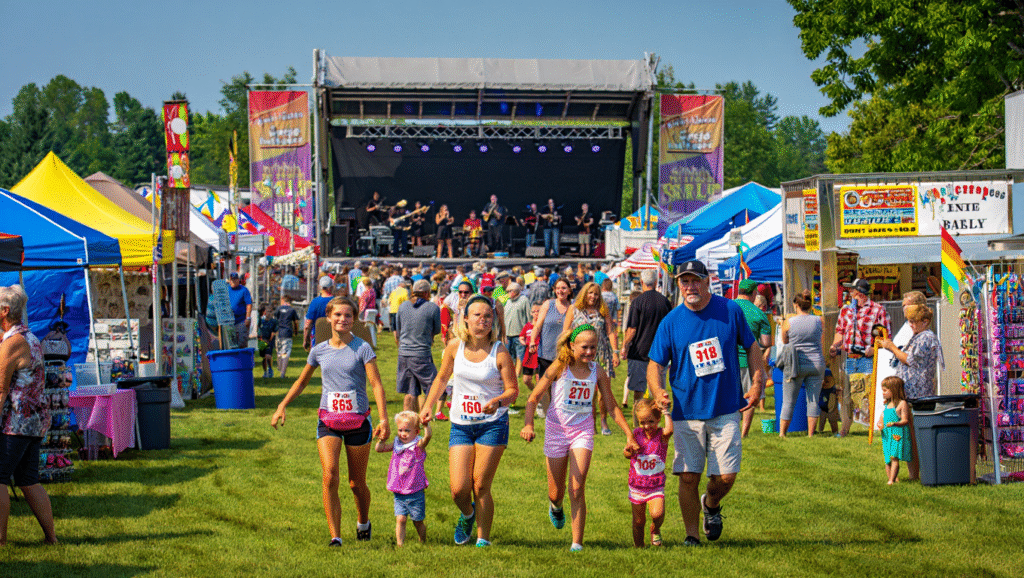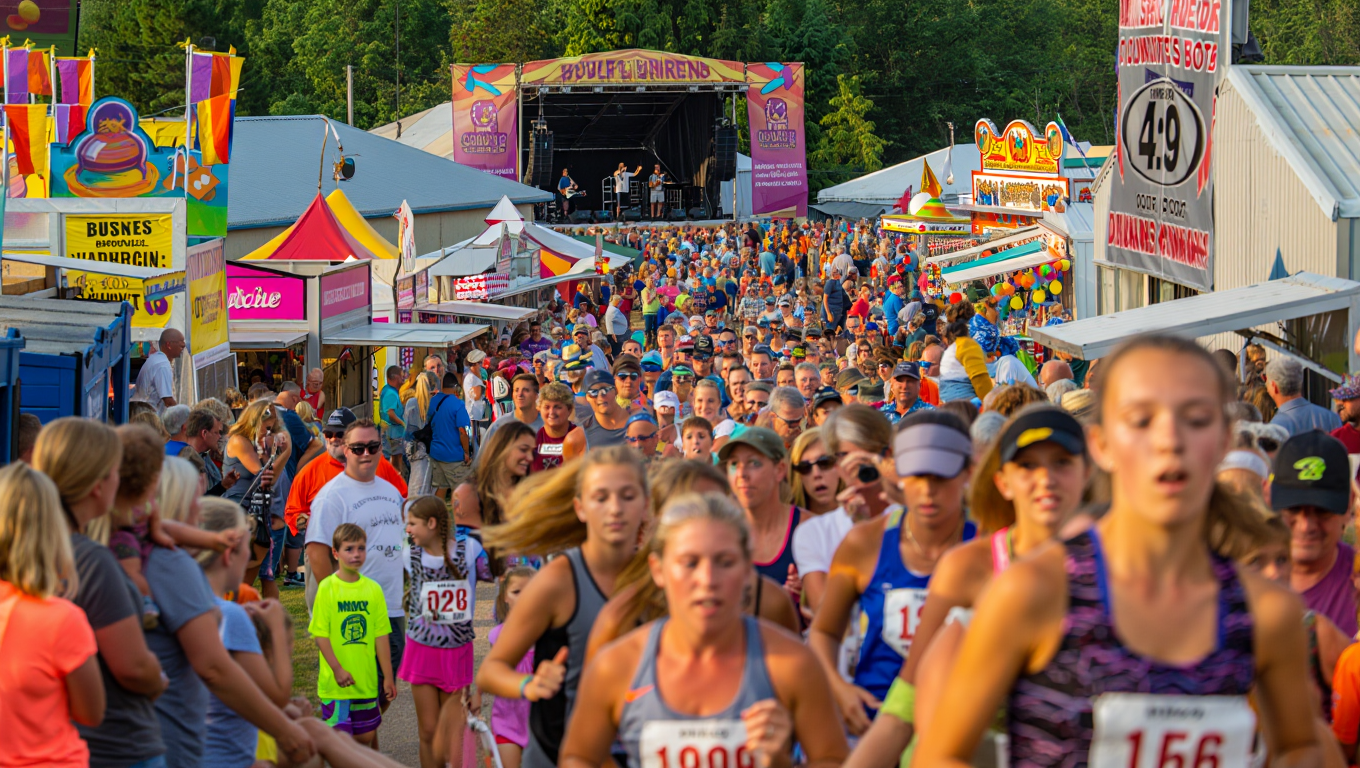Here’s a situation many families know too well: planning a trip to Clearwater County Fair while doubts creep in. Is it worth burning a weekend day? Which vendors deserve attention? What time should we arrive to dodge the crowds? These questions plague thousands of potential visitors every year, creating hesitation where there should be excitement. Traditional fair advertising, despite bright colors and enthusiastic descriptions, often fails to capture the genuine atmosphere of these community celebrations. The revolution in property showcasing through real estate virtual tour services has changed how we view homes, and now this same technology transforms how county fairs connect with their audiences. The solution lies in crafting immersive virtual journeys that eliminate guesswork and boost visitor confidence. When potential attendees can explore every corner of fairgrounds from their living rooms, attendance typically jumps by 23% according to National Association of County Fairs data from 2024. It’s worth noting that this isn’t just about convenience – it’s about building genuine connections before people even set foot on the grounds.
Immersive Storytelling Through Digital Landscapes
County fairs face a rather peculiar challenge that, frankly speaking, many organizers underestimate: conveying the sensory richness of their events through static media. Regular photographs capture moments but miss that bustling energy which makes fairs magical. Virtual tour technology solves this puzzle by creating narrative pathways through fairgrounds, allowing viewers to experience the journey from parking lot to prize-winning livestock exhibits. The technology operates by stitching together 360-degree footage captured at optimal times throughout fair operations, ensuring seamless transitions between different zones and attractions.
Advanced virtual tour platforms now incorporate spatial audio, meaning viewers hear distant carnival music growing louder as they “walk” toward the midway, or catch snippets of auctioneer calls when approaching livestock barns. This audio layering creates emotional connections that static images simply cannot achieve. Research conducted by Fairgrounds Digital Marketing Association in late 2024 revealed fascinating insights. Potential visitors who experienced virtual tours spent 3.7 times longer engaging with fair content compared to those viewing traditional photo galleries. More importantly, these extended engagement sessions translated to higher attendance rates and increased spending per visitor.
The storytelling aspect becomes particularly powerful when virtual tours capture authentic moments rather than staged scenarios. Successful implementations feature real families enjoying rides, genuine vendor interactions, and the organized chaos that defines county fair culture. These unscripted moments build trust with potential visitors who can see exactly what awaits them. Professional virtual tour creators often spend entire days at fairgrounds, capturing content during peak hours to ensure maximum authenticity. What’s especially important here is that authenticity cannot be faked – viewers can sense when something feels genuine versus manufactured.
Technology integration extends beyond simple 360-degree viewing, incorporating interactive hotspots that provide detailed information about specific attractions, vendors, or events. Viewers can click on the Ferris wheel to see height requirements and ticket prices, or tap vendor booths to access menus and special offers. This information layer transforms passive viewing into active exploration, mimicking the decision-making process visitors experience when physically present at fairs. The beauty of this approach lies in its simplicity – complex technology serving straightforward human needs.

Strategic Positioning and Marketing Amplification
Virtual tours function as powerful marketing multipliers, extending far beyond simple documentation of fairgrounds layout. Smart fair organizers position these immersive experiences as central components of their promotional strategies, integrating virtual content across social media platforms, official websites, and community partnerships. The key lies in creating multiple entry points that cater to different audience segments and viewing preferences. Families with young children might gravitate toward virtual tours highlighting kid-friendly attractions and safety features, while food enthusiasts seek detailed vendor explorations showcasing culinary offerings.
Social media integration proves particularly effective when virtual tour segments are repurposed into bite-sized promotional content. A 90-second virtual walkthrough of the prize-winning quilts display can generate significant engagement on Facebook, while Instagram Stories featuring quick virtual peeks at food vendors create immediate appetite appeal. These strategic content fragments serve as teasers that drive traffic to the complete virtual experience. Platform analytics from successful county fair virtual tours show that segmented content generates 45% more shares than complete tour postings. It’s fascinating how shorter content often performs better than comprehensive pieces.
Email marketing campaigns benefit enormously from virtual tour integration, with embedded tour links increasing click-through rates by an average of 31% compared to traditional text-and-photo newsletters. The immediacy of virtual exploration satisfies modern consumers’ desire for instant gratification while building anticipation for the actual event. Successful campaigns often feature “Virtual Tour Tuesday” segments leading up to fair dates, gradually revealing different fairground sections to maintain audience interest over extended periods. This drip-feed approach, one might say, mirrors how anticipation naturally builds.
Partnership opportunities multiply when virtual tours are involved, as local businesses and community organizations can showcase their fair presence through dedicated virtual segments. These collaborative approaches not only reduce production costs but also expand promotional reach through partner networks. Local radio stations, for instance, can integrate virtual tour content into their programming, creating multimedia experiences that bridge traditional and digital marketing channels. The synergy between old and new media creates something neither could achieve alone.
Technical Architecture and Production Excellence
Creating professional-grade virtual tours for county fairs requires sophisticated planning that goes far beyond pointing cameras and recording footage. The technical foundation begins with comprehensive site mapping, identifying optimal camera positions that capture both intimate vendor interactions and sweeping fairground vistas. Professional crews typically conduct multiple reconnaissance visits, timing different fairground activities to ensure virtual content represents the full spectrum of fair experiences. Peak activity periods – usually evening hours when crowds are largest and lighting is most dramatic – demand careful coordination between production teams and fair management.
Camera positioning strategy involves creating logical navigation flows that mirror natural visitor movement patterns. Starting points often feature main entrance areas where visitors get their first fair impressions, then branch into specialized pathways focusing on different interest areas. The midway requires different filming approaches compared to livestock barns, with carnival rides benefiting from dynamic movement capture while animal exhibits need steady, respectful documentation that doesn’t disturb creatures or their handlers. Each location presents unique challenges that experienced crews learn to anticipate.
Post-production workflows for fair virtual tours demand specialized software capable of handling massive file sizes while maintaining smooth playback across various devices and internet speeds. Quality virtual tours typically require processing raw footage that can exceed 500 gigabytes for comprehensive fairground coverage. The editing process involves color correction to account for varying lighting conditions throughout different fairground areas, audio synchronization to ensure immersive soundscapes, and interactive element integration that provides useful information without overwhelming viewers. The technical complexity behind seemingly simple virtual experiences is staggering.
It should be noted that successful virtual tour production teams often include specialists with county fair experience who understand the unique rhythm and culture of these community events. This expertise proves invaluable when determining which moments to capture and how to present them authentically. Technical excellence means nothing if the final product fails to convey the genuine spirit that makes county fairs beloved community traditions. The human element remains crucial despite all the technological advancement.
Economic Impact and Measurable Outcomes
The financial implications of virtual tour implementation extend far beyond initial production costs, creating measurable economic benefits for both fair organizers and surrounding communities. Detailed analytics from virtual tour platforms provide unprecedented insights into visitor interests and behavior patterns, enabling data-driven decision making that optimizes fair layouts and vendor placements. Heat mapping technology shows which virtual tour sections receive the most attention, helping organizers understand which attractions generate the strongest interest and deserve prominent physical positioning.
Revenue tracking becomes more sophisticated when virtual tours include integrated ticketing and vendor promotion features. Some platforms enable direct ticket purchases through virtual interfaces, capturing sales that might otherwise be lost to competing entertainment options. Pre-fair vendor promotion through virtual tours has shown remarkable effectiveness, with featured food vendors reporting average sales increases of 28% compared to previous years without virtual promotion. These financial benefits create sustainable funding models for continued virtual tour production and improvement.
| Metric | Traditional Marketing | Virtual Tour Integration | Improvement |
| Pre-event Engagement | 2.3 minutes average | 8.7 minutes average | 278% increase |
| Advance Ticket Sales | 34% of total | 52% of total | 53% increase |
| Vendor Inquiries | 45 per season | 73 per season | 62% increase |
| Social Media Shares | 1,240 per campaign | 3,180 per campaign | 156% increase |
Community economic impact extends beyond fairground boundaries, as virtual tours showcase local attractions and businesses visible in surrounding areas. Hotels, restaurants, and retail establishments benefit from increased visibility when virtual fair tours include contextual information about nearby amenities. Regional tourism boards increasingly recognize virtual county fair tours as valuable promotional tools that highlight authentic local culture and traditions. These broader economic benefits help justify virtual tour investments and create opportunities for collaborative funding arrangements between fairs and local economic development organizations.
Return on investment calculations must account for both direct revenue increases and long-term brand building effects. Successful virtual tours create lasting digital assets that continue generating value long after fair dates pass, serving as historical documentation and promotional materials for future events. The compounding effect of annual virtual tour updates creates comprehensive digital archives that showcase fair evolution and community growth over time. What’s particularly interesting is how these archives become community treasures in their own right.
Audience Engagement and Community Building
Virtual tours transform passive fair promotion into interactive community experiences that foster deeper connections between organizers and potential attendees. The technology enables personalized exploration paths that cater to diverse interests and accessibility needs, creating inclusive experiences for individuals who might face physical or logistical barriers to fair attendance. Elderly community members can experience fairground excitement from home, while busy parents can preview kid-friendly areas to plan efficient family visits. This inclusivity aspect often gets overlooked but proves incredibly valuable.
Interactive features within virtual tours facilitate community engagement through comment systems, social sharing capabilities, and integration with local community forums. Viewers often share memories and stories triggered by virtual fair exploration, creating organic content that enhances promotional value while strengthening community bonds. These user-generated contributions transform virtual tours from one-way promotional tools into dynamic community gathering spaces that celebrate shared experiences and local pride. The conversations that emerge can be just as valuable as the original content.
Educational components integrated into virtual tours serve multiple community functions, preserving local agricultural knowledge and fair traditions for future generations. Interactive exhibits showcasing traditional farming techniques, craft demonstrations, and historical displays create digital archives that extend far beyond entertainment value. Schools increasingly incorporate these virtual resources into local history curricula, ensuring county fair traditions remain relevant to younger generations who might otherwise lose connection to agricultural heritage. This educational angle adds depth that pure entertainment cannot provide.
The ripple effect of enhanced community engagement through virtual tours creates sustainable attendance patterns that benefit fairs long-term. When community members feel genuinely connected to fair experiences through immersive virtual content, they become advocates who share enthusiasm with friends and family members. This organic word-of-mouth promotion, amplified through virtual tour sharing capabilities, creates expanding circles of community engagement that strengthen fair sustainability and growth potential. The technology transforms individual fair visits into community-wide celebrations that begin long before gates open and continue well after closing ceremonies conclude. In essence, virtual tours don’t just document fairs – they extend and amplify their community impact in ways we’re still discovering.
